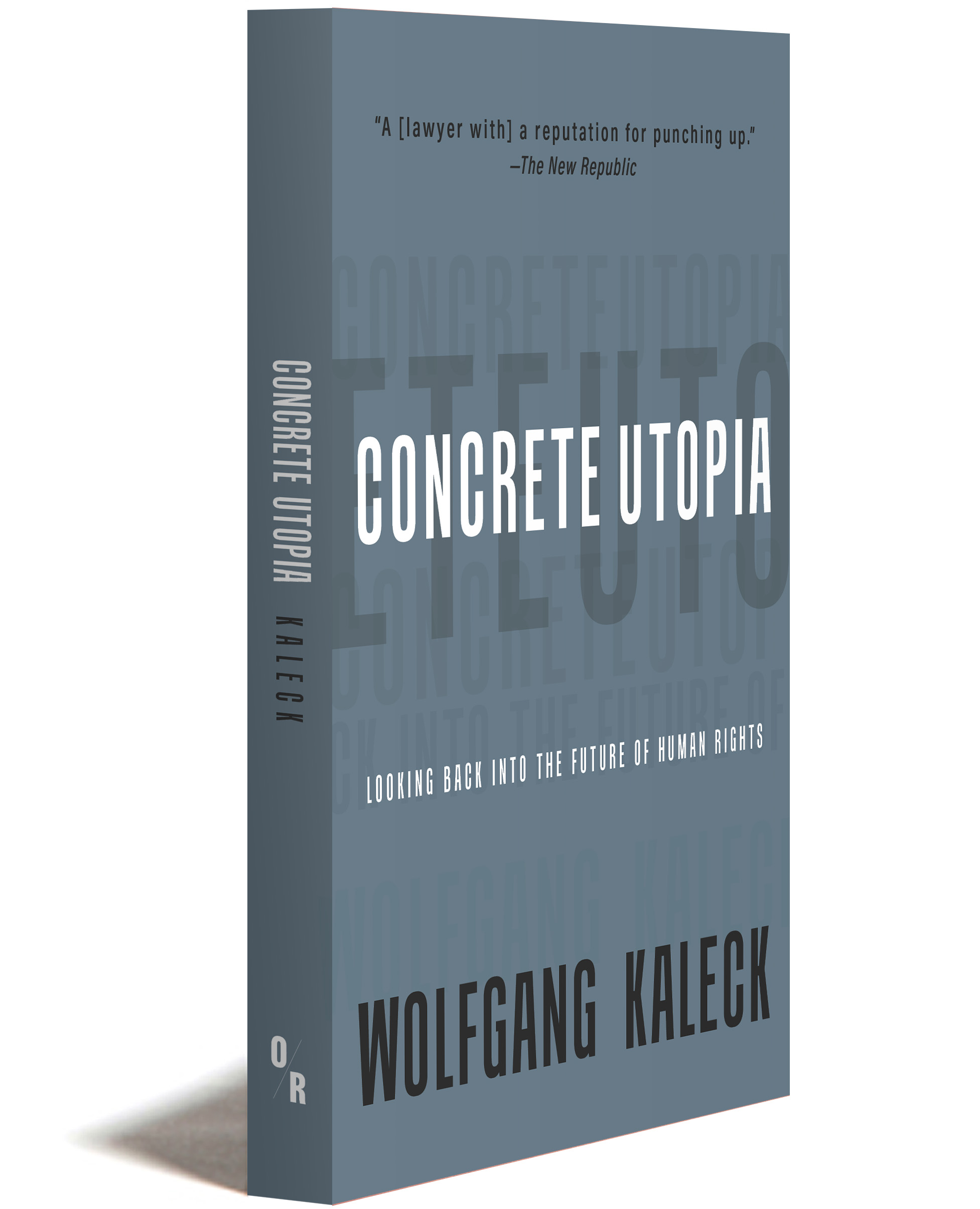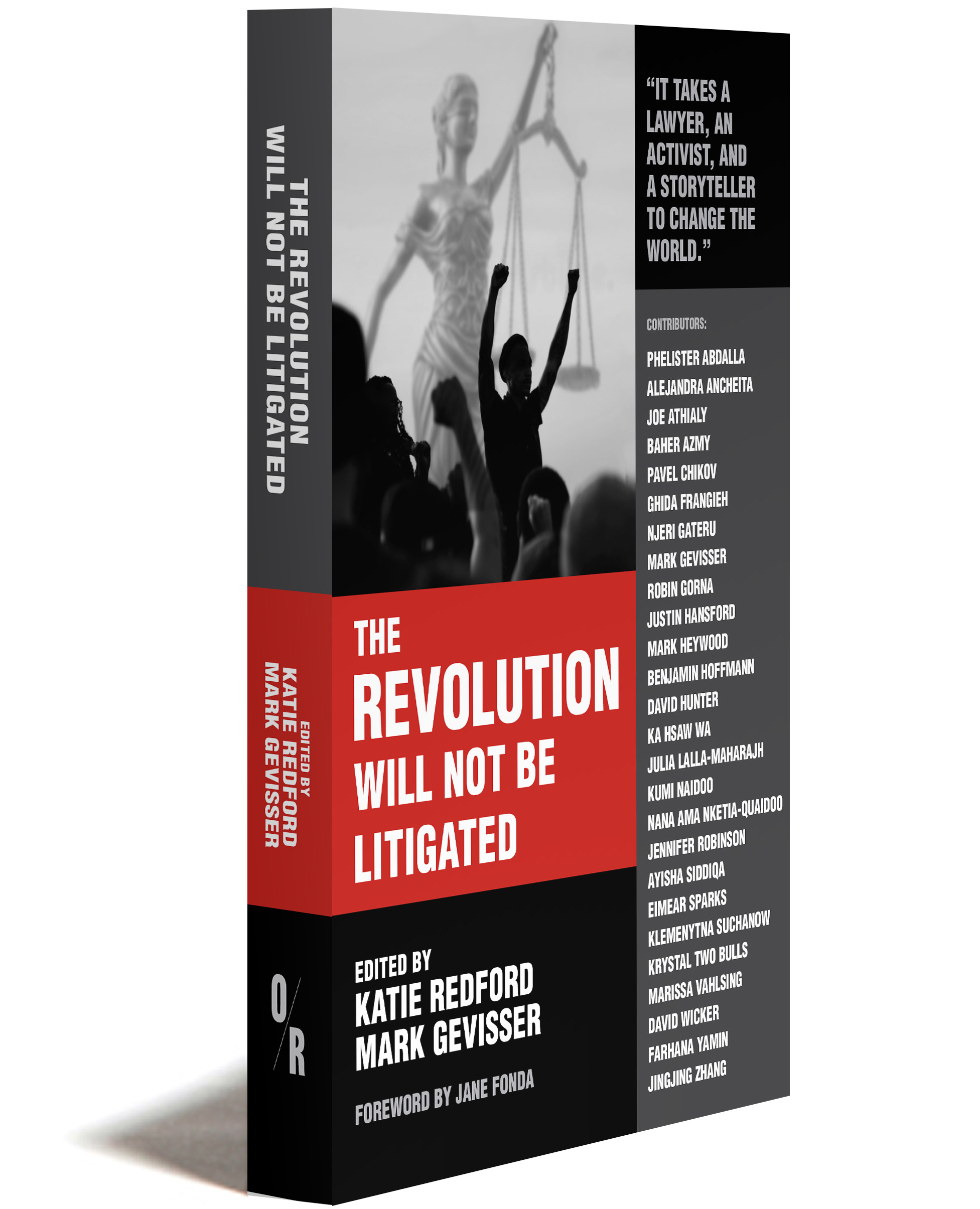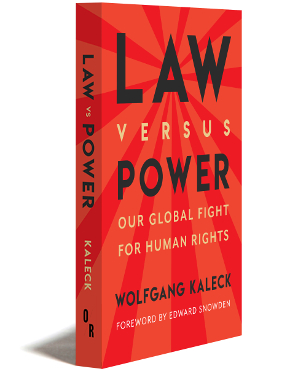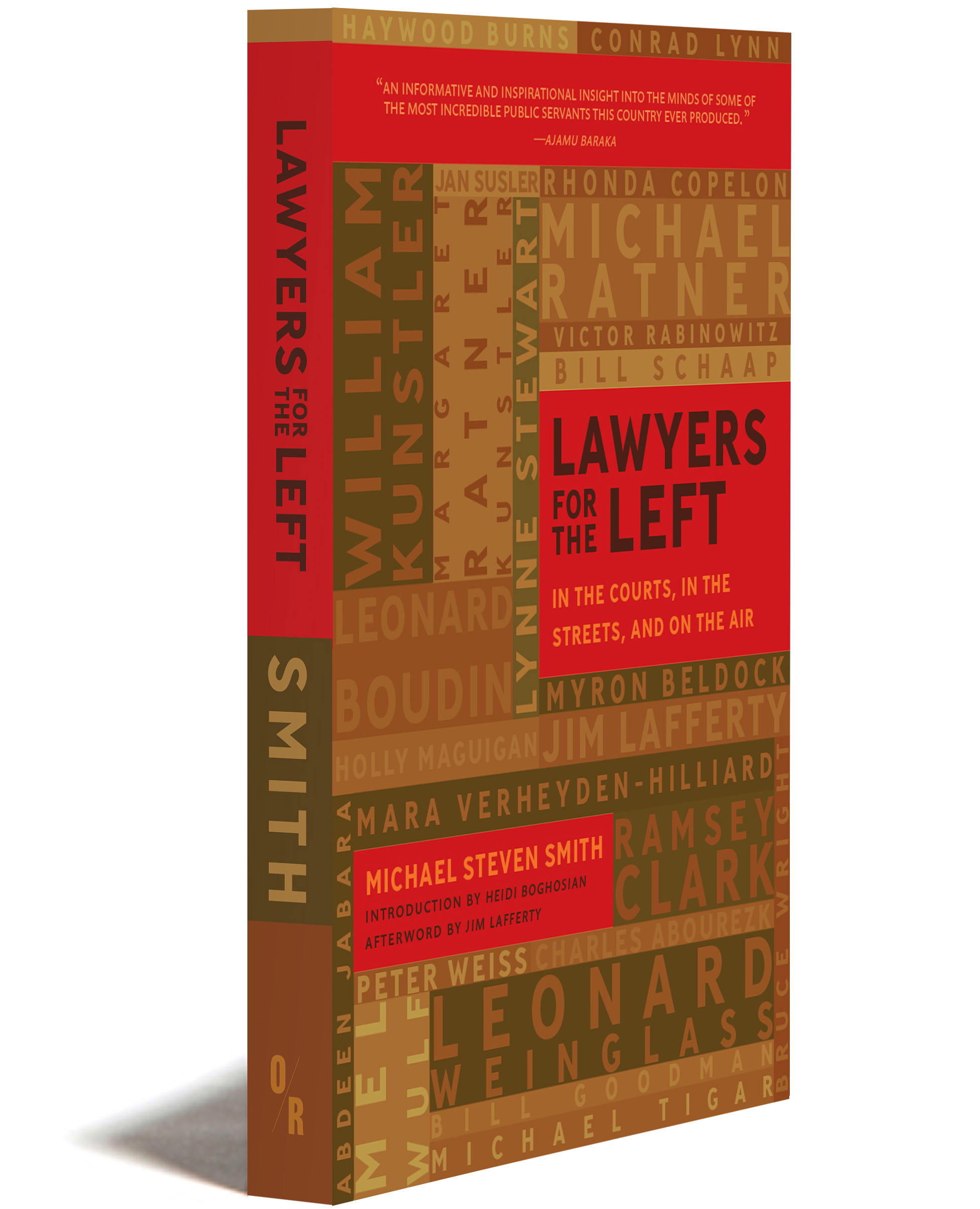Concrete Utopia
LOOKING BACK INTO THE FUTURE OF HUMAN RIGHTS
“A lawyer with a reputation for punching up.” —The New Republic
TweetBuy This Book
|
Paperback: $18/£15 |
E-book: $10/£9 |
Print + E-book: $22/£19 |
About the Book
Concrete Utopia conceptualizes the human rights project of the last two and a half centuries as a “backward-looking” endeavor, which, in order to move forward, must return to the utopian roots of its foundational documents.
Human rights advance by judging the ills of the present world from a standpoint in the future where they might no longer exist—a fundamentally utopian gesture. This peculiar character of human rights makes them continually ripe for reinvention and for responding to changing world circumstances. Looking at topics such as the Auschwitz trials in Frankfurt in the mid-1960s, public outrage to the Vietnam War, the US civil rights movement and the founding of Amnesty International in 1961, this book surveys the history of human rights and how they have been reconceived at different points in time. It closes by sketching the way they may be re-envisioned for new struggles in the 21st century.
At a time when the human rights project has endured criticism for being toothless or even for providing a pretext for military invasions, Kaleck argues that the current global crises, from inequality, to ecological collapse and the “age of pandemics,” can be countered by reinventing human rights work through feminist, decolonial and ecological interventions.
194 pages • Paperback ISBN 978-1-682191-439-3 • E-book 978-1-682191-440-9
About the Author

Wolfgang Kaleck is a lawyer and author who founded the European Center for Constitutional and Human Rights (ECCHR) in Berlin in 2007 and is now its Secretary General. He has published several books, including Law versus Power (2018), which has been translated into four languages. Kaleck became known to a wider public through his work representing the whistleblower Edward Snowden. In 2020/22, Kaleck was a visiting lecturer at the Sorensen Center for International Peace and Justice at CUNY School of Law in New York. In recognition of his human rights work, he has received several awards, including the Bassiouni Justice Award and the Hermann Kesten Prize from the PEN Center Germany.
Read an Excerpt
“All human beings are born free and equal in dignity and rights.” This is how briefly and succinctly the concrete utopia of human rights is declared in the first sentence of Article 1 of the “Universal Declaration of Human Rights” of December 10, 1948. This article is utopian because it describes a condition for all people in the world to strive for. It is readily apparent, however, that in reality other conditions prevail. It is not foreseeable if and when the claim that all human beings are born free and equal in rights will become a reality.
With the “Universal Declaration of Human Rights,” a programmatic document was created after the Second World War that was far ahead of the political circumstances of its time and that today still contains useful potential in various respects. In reaction to the “acts of barbarism” committed by the National Socialists, as it was so formulated in the preamble, it represented a consensus of diverse ideological currents of the time—which, incidentally, was achieved through the active participation not only of important figures in the West, such as Eleanor Roosevelt or René Cassin, but also of non-governmental organizations such as the American Jewish Committee and of diplomats of the Third World (albeit without the participation of large sectors of the world’s population who still lived in the colonies).
It is often overlooked that in addition to the important individual basic rights to life, freedom, freedom of movement, and the prohibition of slavery and torture, the Declaration also contained economic, social, and cultural human rights, of which large portions of humanity to this day can only dream, such as the right to social security, the right to work and equal pay, as well as the rights of trade unions and the right to education.
For roughly two decades, the human rights declaration remained merely a recommendation, without any actual, underlying international treaty planned at the time to enforce it. There were neither legally binding norms to be upheld, nor institutions and courts to enforce them. According to a widely held interpretation, the victorious Allied Powers had sought to create a “charter of the great powers.” Other states did not want to be bound legally, among them also the European colonial powers, as they feared that this would obstruct their own policy of fighting against anti-colonial efforts.
The victorious powers of World War II held the Nuremberg trials of Nazi war criminals with the claim that they were establishing a new global legal order. But at the same time, they were violating the freshly established rights at every turn in the context of the embattled decolonization movements. Great Britain and France suppressed the anti-colonial freedom movements in Kenya, Algeria, Indochina, and Africa through asymmetrical wars using all means at their disposal, which also included torture, mass arrests and massacres, as did the smaller colonial powers, such as Netherlands in Indonesia, Belgium in Congo, and Portugal in Southern Africa. The British colonial minister Arthur Creech Jones epitomized this attitude when he described the Charter in 1949 as a “source of embarrassment.”
Just as Michel-Rolph Trouillot viewed the Haitian Revolution as the ultimate test of the universalist claims of both the French and American Revolutions, Ralph Bunche, one of the architects of the UN Charter, saw the colonial question as a test of the ability of the post-war order to implement the ideals and principles for which the victorious powers of World War II—and with them millions of African and Asian soldiers from the colonies—had fought.
Despite the lack of legally binding authority, the US and the Soviet Union, along with the decolonized states that had become independent, repeatedly invoked human rights in UN forums, at least during the first decades after World War II. Human rights and the accusations of class segregation and discrimination in the US, Australia, and South Africa—on the one hand—and the forced labor and political prisoners within the Soviet Union, on the other, shaped the ideological battlegrounds of Cold War. This was less about helping the political prisoners in the Soviet Union or Black people in the US to achieve their rights than it was about morally and ideologically discrediting one’s respective opponent in the Cold War.
Otherwise, the Soviet Union and China broke practically every law against their own citizens: namely, with the enormous camp systems containing millions of people and the oppression of national minorities.
The US, in turn, was responsible for dozens of overt and covert coups d’état against democratically elected governments, such as Jacobo Árbenz in Guatemala, Juan Bosch in the Dominican Republic, Mohammad Mossadegh in Iran, and Salvador Allende in Chile in 1973, and has been directly or indirectly involved in decades of repression by military governments and militaries in southern Latin America and Central America.
Because of the reluctance of these powers and, above all, because of the stalling maneuvers of the colonial powers Great Britain and France, the process of constitutionalization was delayed. Much later than was intended, in December 1966, the two major covenants for civil and political rights (“Civil Covenant”) and for economic, social and cultural rights (“Social Covenant”) were adopted by the UN General Assembly, finally officially going into effect in 1976. This was followed by numerous conventions with specific prohibitions against discrimination, such as those on racial discrimination (1965), discrimination against women (1979), as well as the Convention on the Rights of the Child of 1989 and the Convention on the Rights of Persons with Disabilities of 2006. In the field of international humanitarian law and international criminal law, the Geneva Conventions—together with additional protocols such as the Genocide Convention of 1948 and the UN Convention against Torture of 1984—are worthy of mention. Internationally and independently staffed treaty committees monitor compliance with and implementation of these covenants. In some cases, individual complaints can also be submitted to these committees. Step by step, an increasingly dense system of human rights protections has been established.
These steps, from the programmatic recommendations of the 1948 “Universal Declaration of Human Rights” to the international juridical rights established in the covenants of 1966 and thereafter, only took place gradually.
Human rights became more international, and utopia became more concrete. Extending beyond the minimal consensus of rights of defense vis-à-vis the state, the human rights of different generations became enshrined. These were (after or alongside the first generation of classical political and civil rights), the economic, social, and cultural rights of the second generation, followed by the third generation of collective rights—formulated in vague manner that is not justiciable—including, among others, the right to development, which is quite significant for the majority of UN states.
In the Media








